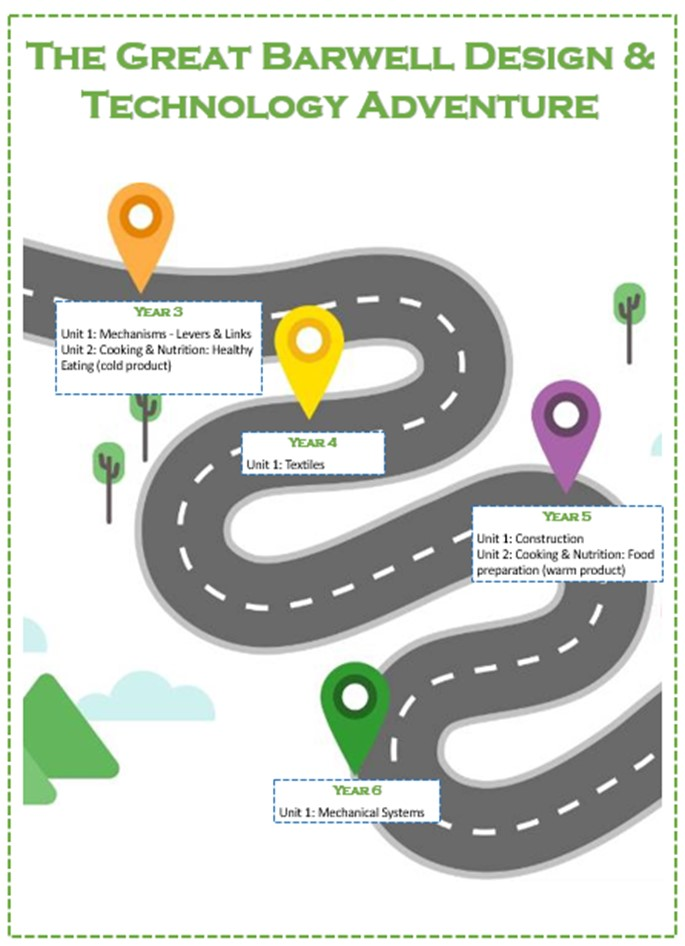Design and Technology

Design and Technology is an inspiring, rigorous and practical subject. Using creativity and imagination, pupils design and make products that solve real and relevant problems within a variety of contexts, considering their own and others’ needs, wants and values.
They acquire a broad range of subject knowledge and draw on disciplines such as mathematics, science, engineering, computing and art. Pupils learn how to take risks, becoming resourceful, innovative, enterprising and capable citizens. Through the evaluation of past and present design and technology, they develop a critical understanding of its impact on daily life and the wider world. High-quality design and technology education makes an essential contribution to the creativity, culture, wealth and well-being of the nation.
Our Design & Technology curriculum is founded in knowledge. This ensures that the learning becomes priority, not the project. Although we want to engage children with different materials and to have fun within their D&T so that they become inspired to explore more, we also wish for them to develop skills and their understanding of how to select materials, how to develop a product design to meet set specifications, and how to use materials effectively – such as the principles involved in reinforcing chosen materials if needed.
Our Design and Technology Vision:
"At Barwell Church of England Academy, children are taught to select and use appropriate tools safely and effectively to make a product. In all areas of Design and Technology the children are encouraged to consider the effectiveness of their designs and requirements of the product. Every child will have the opportunity to learn and extend their understanding, experience and application in the use of technology, in as wide a variety of situations as possible."
Our Design and Technology Curriculum
Our Design & Technology Curriculum has been split into six Learning Journeys during the children’s time in our school. The bulk of the curriculum is taught in a weekly afternoon session by one of our highly skilled Higher Level Teaching Assistants. Each of the D&T Learning Journeys is designed to last half term.
As Art and Design/Design & Technology are both taught during our PPA slots, we have split the learning of the two subjects across the year. This is so that those units that require longer for the whole Learning Journey are able to have the extra weeks that some of the longer terms provide.
The structure of the two curriculums is as follows:

As children progress though our school, their Design & Technology journey will give them the chance to develop their key skills in a variety of units, where they will study a mixture of Design & Technology elements surrounding the topics of Textiles, Mechanisms, Structures & Food Technology. They will study existing products before designing and creating their own product based on a design brief and given specifications.
As children progress through our school, they will follow this journey in Design & Technology:

Our Design and Technology Substantive Concepts
Within each of these Learning Journeys, there is a particular D&T focus that allows children to develop their skills during their time in our school. Each Learning Journey has, at its centre, our Design & Technology Substantive Concepts: Design, Make & Evaluate. In addition, as in all other areas of the Barwell Curriculum, vocabulary is at the core of D&T. We embed the technical knowledge within our substantive concepts across all units.


Whenever children complete Design & Technology Lessons, these ideas will be at the heart of their learning and through our spiral curriculum, their skills will be enhanced as they progress throughout our school. For each of the Design & Technology units, there is a Leaning Journey map that details the knowledge and vocabulary that we expect children to develop. Our focussed Design & Technology curriculum allows time for both the practical and the theoretical elements that our children need to develop a variety of skills within the subject.
Inclusion in Design and Technology
To make Design & Technology lessons inclusive, our staff work to anticipate what barriers to taking part and learning particular activities, lessons or a series of lessons may pose for pupils with particular additional need. Within planning we consider ways of minimising or reducing barriers so that all pupils can fully take part and learn.
Assessment for learning is used throughout the teaching of D&T to ensure that the lessons are truly responsive. This enables the teacher to ensure all pupils, regardless of their starting point, are able to access and be challenged within their learning in order to progress and develop.
